The landing page is the core of your SEO strategy. It’s what you build in order to get people to convert, whether that be making a purchase or filling out a form for more information. The landing page can make or break your conversion rates. So, how do you create landing pages that are successful? You need to understand searcher intent and target specific keywords with the right landing pages! So, how do you figure out searcher intent? It’s actually not that hard. Once you have found the queries/keywords you want to better target for the page, do additional research to see what Google views as the intent behind each of those keywords.
B2B Marketing News: B2B Digital Ad Spending Grows, Google Adds Knowledge Graphs For Podcasts, Instagram’s New Creator Features, & Gen Z Engagement Study Insights
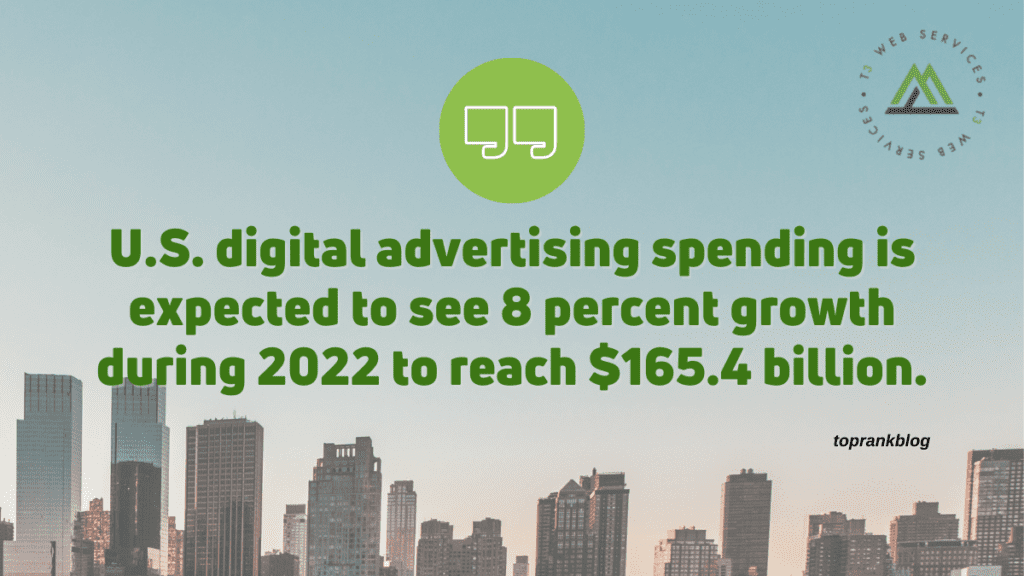

B2B Exhibition Industry Performance Improves in Q2; Only 2 in 3 Events Cancelled
Overall combined physical and virtual B2B event industry performance has begun to see a rebound from 2020’s pandemic-led low point, with fewer exhibitions cancelling events, according to recently-released survey data from the Center of Exhibition Industry Research (CEIR). MarketingCharts
Instagram adds scheduling and ‘practice mode’ features for Live creators
Facebook’s Instagram social media platform has added the ability to pre-schedule content up to 90 days in advance, and a new connection-testing mode, two of several new features the firm has launched surrounding its Live creators feature, Instagram recently announced. TechCrunch
Twitter Shares New Insights into Gen Z Usage and Engagement
Some 70 percent of Gen Z Twitter users have said that they use the platform’s app to learn about new products — one of several statistics of interest to digital marketers contained in new report data from Twitter exploring how brands can connect to Gen Z using its platform. Social Media Today
eMarketer’s B2B Advertising Forecast 2021: 6 Key Insights & Revelations
Technology and financial services top the list of industries when it comes to B2B advertising spending, with tech products and services accounting for some 32 percent and FinServ 25 percent — two of numerous statistics of interest to B2B marketers contained in recent advertising forecast data. LinkedIn (client)

https://www.toprankblog.com/2021/10/b2b-marketing-news-102221/
Why Search Agencies Should Embrace the Adjacency of Email Marketing [Updated 2021]
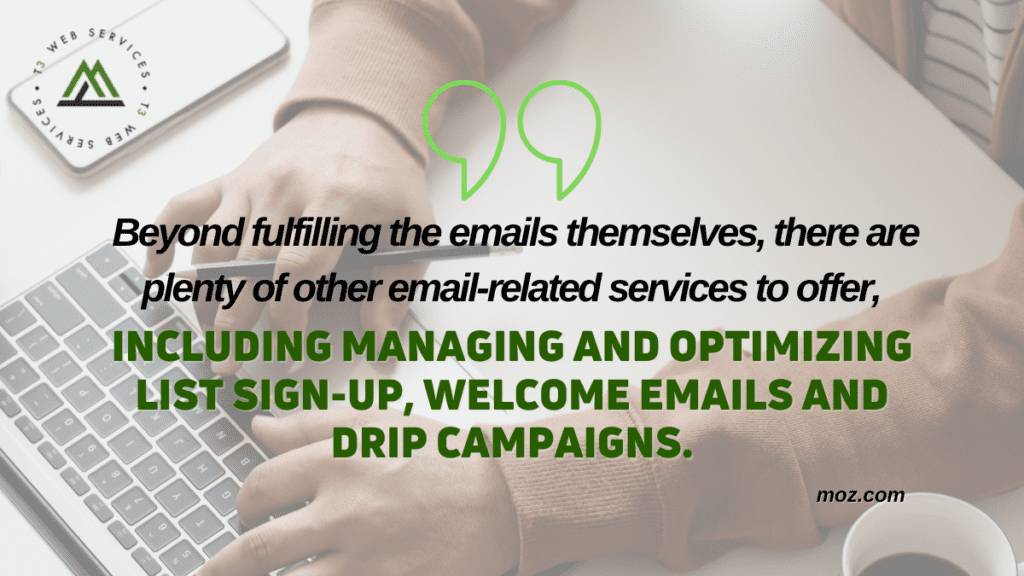

Why agencies should offer email:
Your customers know it works.
Local businesses might be more aware of email’s potency than some of the agencies that are serving them. Email consistently rates among the top three marketing channels in industry surveys — CampaignMonitor, TheManifest, and CallRail among others. (The CallRail study is a trove of market research for agencies, by the way.)
At the very least, email requires barely any client education. Unlike the black box of SEO or the complexity of paid search, by and large, small businesses inherently understand email marketing. They know they should be sending emails to their customers, but many of them just aren’t doing it yet, or are doing it poorly.
It’s a concrete deliverable.
Unlike so much of the behind-the-scenes work that leads to success in SEO, clients can actually see an email campaign delivered to their inbox, as well as the results of that campaign: every major Email Service Provider tracks opens (again, less valuable post-iOS15) and clicks by default.
It leverages existing offerings.
I already mentioned some of the ways that email marketing complements other channels above. But it can tie in even more closely to an agency’s existing content offering: many of you are already developing full content calendars, or at the very least social content.
<pitch>(For those clients whom you’re helping with social media, their newsletter can be built using Tidings with no additional effort on your part.)</pitch>
Building email into your client content strategy can help their content reach a deeper audience, and possibly even a different audience.

https://moz.com/blog/why-search-agencies-should-embrace-email-marketing
10 Actionable B2B Content Marketing Insights From New Research
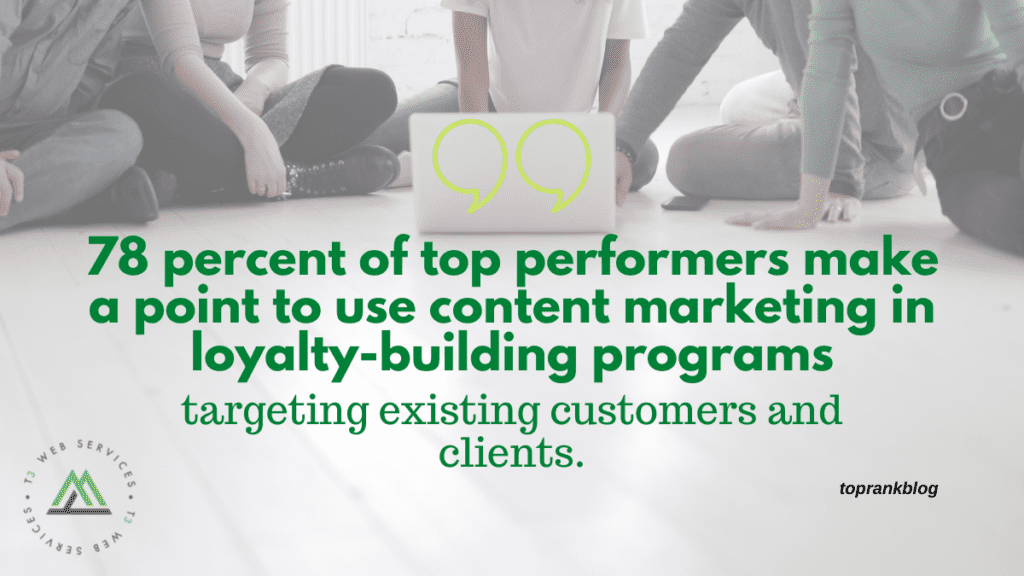

Let’s take a look at some of the insights and revelations from the research data that you can take action on and use today in your own B2B content marketing efforts, and include in your strategy for 2022 and well beyond.
1 — More B2B Content Marketing & Greater Success From Defined Strategies
The research’s own introduction summarizes as a key finding the significant success that content marketing has had in the B2B landscape over the past challenging year.
It should come as little surprise, as other recent research has also revealed that content-based business models are on the uptick, such as new report data from the Interactive Advertising Bureau (IAB) contained in its latest “The Economic Impact of the Market Making Internet” study, published every four years.
The new IAB data showed that over half of all U.S. advertising and media employment is now derived from the Internet, with a healthy proliferation of business based on content creation — a fact that is backed up throughout much of CMI’s recent research.
2 — More Successful B2B Organizations Outsource, Use Content Marketing Tools
A majority of the top marketers in the research — some 57 percent — say that their organization outsources some content marketing functions, a statistic that meshes with the importance of creating best-answer content, whether in-house or in the form of a top award-winning outside agency such as TopRank Marketing.
While only half of marketers who describe their organizations’ approach to content marketing as minimally or not at all successful say that they use content creation, calendaring, or collaborative workflow tools, a hefty 83 percent of the most successful organizations did make use of such technology, the report noted.
3 — Measurement, Creativity & Consistency Present In Top B2B Content Marketing
Another differentiator that places a stark contrast between the most and least successful content marketers is that 90 percent of the top performers have a program in place to measure the performance of content marketing efforts, while just 39 percent of the least successful organizations use such measurements.
Across the board, today’s B2B content marketers view 2022 with optimism for content marketing, as witnessed by 75 percent of those at the most successful organization who expect content marketing budgets to increase in 2022, with even 61 percent of those having the least success also expecting to spend more on content marketing next year.

Read more: https://www.toprankblog.com/2021/10/10-actionable-b2b-content-marketing-report-insights/
How Can I Drive More Traffic To Targeted Landing Pages?
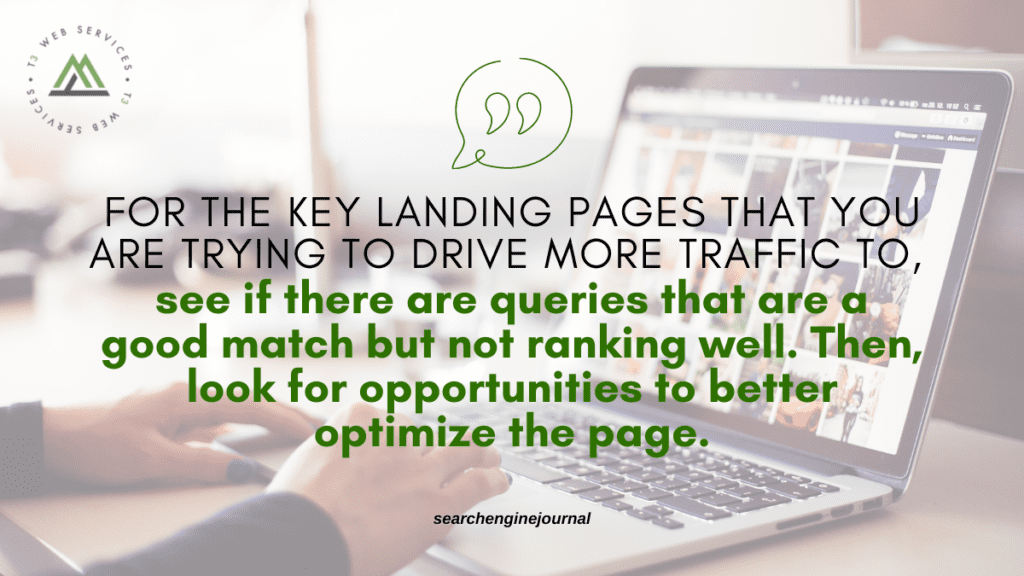

1. Review Rankings And Queries On A Page Level
You need to determine what each page is ranking for and the queries Google has associated with it.
If you are not already, be sure to track your rankings in an SEO tool, such as Semrush, SpyFu, SE Ranking, Rank Ranger, Moz, etc. (there are a ton of great tools).
Don’t just look at the ranking overview, but instead drill down into what each page is ranking for.
In addition, use Google Search Console to determine the queries for each page.
2. Determine Searcher Intent
So, how do you figure out searcher intent? It’s actually not that hard.
Once you have found the queries/keywords you want to better target for the page, do additional research to see what Google views as the intent behind each of those keywords.
This is where SEO tools come back in.
Most tools will show you the top-ranked pages in search results for each keyword. Go through the top ten to determine the intent of those pages.
3. Update Internal Links
One final thing you should consider is how you are linking internally.
This approach will help you build a clear structure within your site and also build authority for the topics you are targeting with your landing pages.

https://www.searchenginejournal.com/drive-traffic-to-landing-pages/424494/
How To Set Up a Publishing Process That Gets Content Into the Game
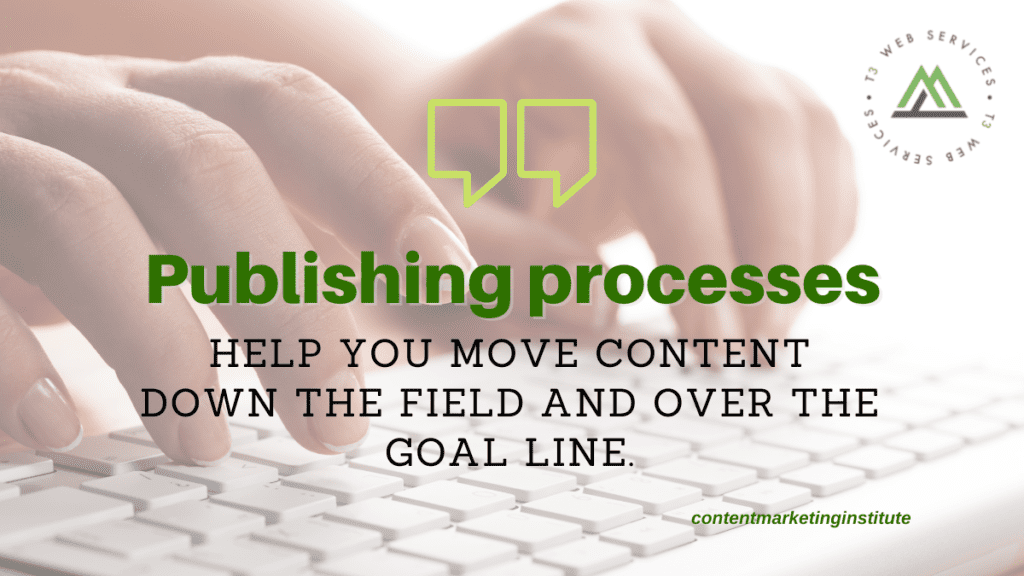

Get organized to track content progress
The team member responsible for this operation must know the status of each content asset being created. At the same time, they also must create and maintain the post-production publication schedule. These two things can be closely tied to your editorial planning.
Manage content from multiple sources
First, save the content in a centralized location accessible by everyone involved in the creation, review, and publishing process. CMI currently uses Box, though we’ve used Dropbox in the past. Other teams might use Microsoft OneDrive, Google Drive, or other cloud-based platforms.
Second, set up a standardized process for organizing files and set up naming conventions. This helps with version control (even if you use software that assists in this.) You never want to publish an outdated version of the content. And you don’t want to have to ask three people to figure out what is the correct version to use.

https://contentmarketinginstitute.com/2021/10/how-set-up-publishing-process/
BigCommerce SEO Features & Tips for Ecommerce Success


Link Building
Links play a crucial role in driving organic traffic to your ecommerce store via search engines, especially in overly competitive industries.
When they are combined with strong technical SEO foundations, on-page SEO, content, and user experience, link building can be effective at driving more organic traffic to your online store and improving your rankings.
Social Media Promotion
If you combine SEO strategies with your social media marketing plan, you can boost engagement and bring new traffic to your store.
It’s important that you’re authentic and engaging in social. Avoid being overtly sales-driven, but don’t be afraid to share offers that offer your audience real value.
Content Marketing
Content marketing can be an incredibly effective way to expand your visibility in search and improve discovery.
But if you are creating and optimizing your content around the wrong topics, you will lose out on sales.
Technical SEO
Technical SEO is a necessity because it is what allows search engines like Google to know that you have a website of high value to customers.
Having strong technical SEO can prompt search engines to rank your website higher than the competition and also help improve your customer’s experience.

https://www.searchenginejournal.com/bigcommerce-seo-tips/421698/
How to Optimize Your LinkedIn Company Page for 2022
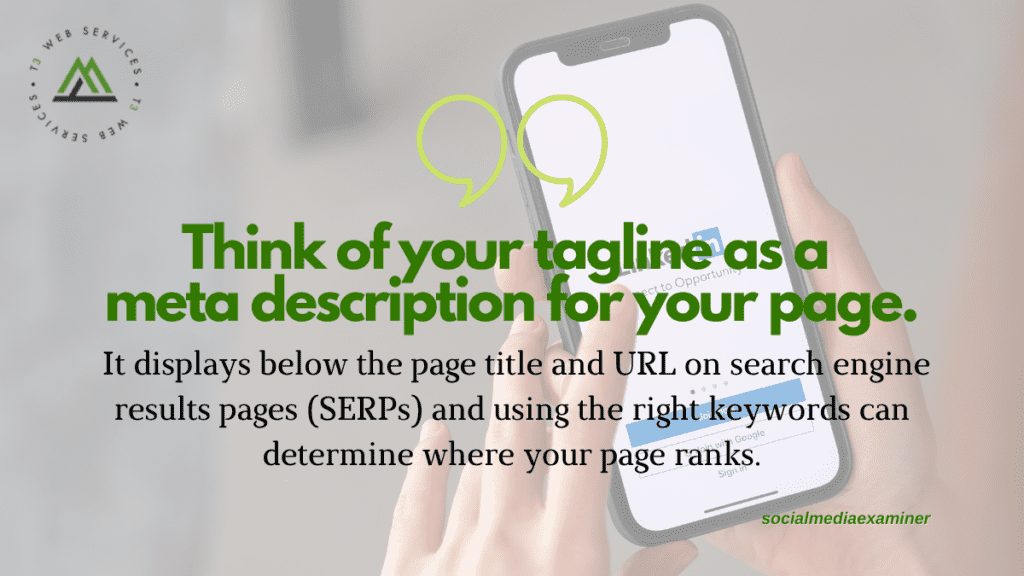

#1: Optimize Your Company Page for Dark Mode
Following the lead of many other social media channels, LinkedIn announced a dark mode option in September 2021. Although the platform is rolling out the feature gradually rather than all at once, you shouldn’t wait to start optimizing LinkedIn content or layouts for dark mode.
Your logo identifies your brand across LinkedIn and your content helps your company establish authority so it’s essential to ensure both the logo on your page and the images in your content display correctly.
#2: Update Your LinkedIn Banner Image
When a LinkedIn user visits your company page, one of the first things they’ll notice is your banner image. If you haven’t updated your banner image in a while, there’s a good chance it needs more than a quick border or background fix.
Instead of using an evergreen banner image to anchor your company page, refresh it when your business has something new to share.
#3: Align Your Tagline and CTA Button
Your banner image is the most visually compelling part of your LinkedIn page. But the rest of your page elements should work together to drive the results you want.

https://www.socialmediaexaminer.com/how-to-optimize-your-linkedin-company-page-for-2022/


Leave a Reply